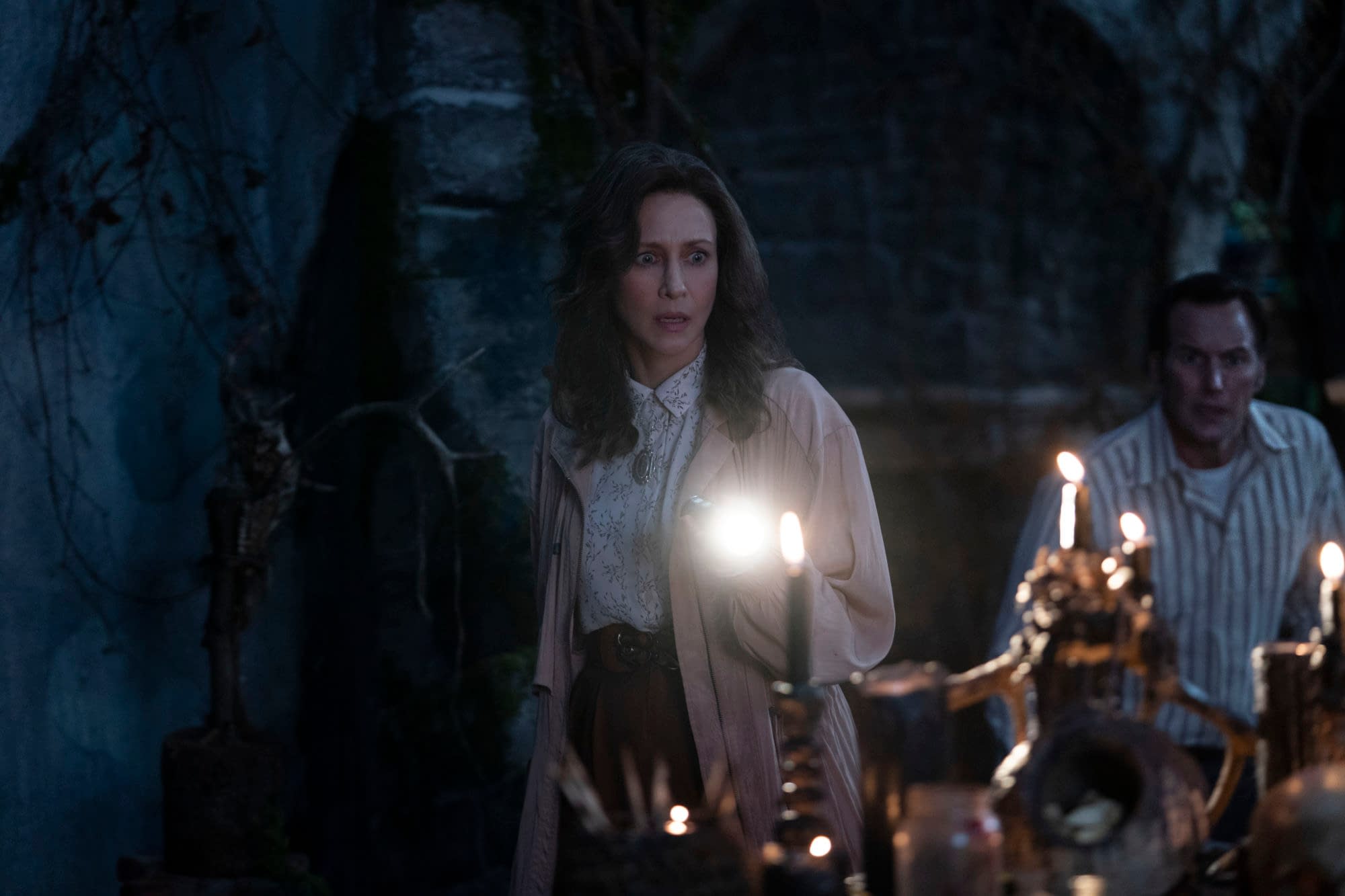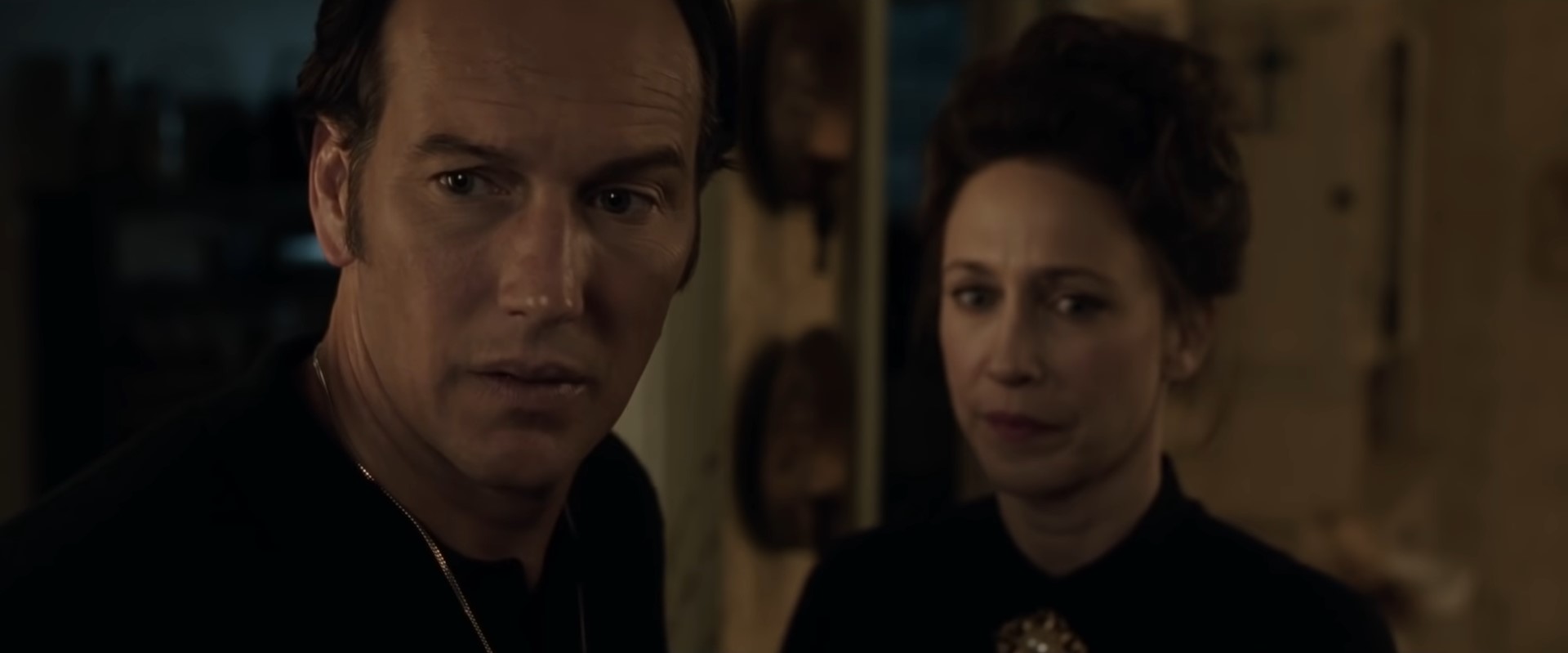The fantastic horror franchise ‘The Conjuring’ has often been lauded for telling stories with its roots set in reality. The movies portray deeply frightening and scary cases that real-life paranormal investigators Ed and Lorraine Warren have worked on in their careers. James Wan directed the first two movies of the series, while ‘The Curse of La Llorona‘ fame Michael Chaves helmed 2021’s ‘The Conjuring: The Devil Made Me Do It.’
The story of the third movie revolves around a murder suspect who admits to carrying out a murder. However, he adds that he was not responsible for the crime as a demonic power possessed him and forced him to commit the murder. Even with the premise sounding like a far-fetched story, fans are interested to know if the third installment has its claws in real life. Let’s find out, shall we?
Is The Conjuring: The Devil Made Me Do It Based on a True Story?
‘The Conjuring: The Devil Made Me Do It’ is partially based on a true story. Although, the film employs numerous fictional tropes and occasionally gives way to completely fictionalized incidents. According to history, Ed Warren was a veteran of the Second World War who became obsessed with Demonology after studying the subject.

On the other hand, his wife, Lorraine Warren, alleged that she was a clairvoyant. She claimed that she could reach out to and even communicate with various spirits and demons who don’t belong to our world. Together, the Warrens opened their own organization in 1952. Through the organization called the New England Society for Psychic Research, Ed and Lorraine took on paranormal cases and began investigating them to the best of their abilities.
2013’s ‘The Conjuring’ was based on the actual experiences of the Perron family after they moved into a house on Harrisville, Rhode Island. The hauntings shown in the movie, as well as the spirit, Bathsheba, were actually investigated by Ed and Lorraine, and although they did not attempt an exorcism as shown in the movie, they did attempt a séance.
2016’s ‘The Conjuring 2’ also borrowed its plot from another real-life Ed and Lorraine case. Between 1977 and 1979, there were several claims of paranormal instances and demonic possessions at a house in Brimsdown, Enfield. Later gaining fame as the Enfield Poltergeist, the claims mostly revolved around two sisters and their supposed possession by a spirit. The real-life case caused quite a stir in the paranormal circuit, which led to numerous arguments debating the authenticity of the case.
Like the previous two movies, ‘The Conjuring: The Devil Made Me Do It’ is also based on a paranormal case that Ed and Lorraine Warren worked on in Connecticut. Borrowing its plot from the real-life trial of Arne Cheyenne Johnson, the film takes us back to the first and the only time in the United States when a suspected murderer pleaded not guilty based on claims of demonic possession. Arne Cheyenne Johnson was arrested for killing his landlord while in the middle of a severe argument. When produced in court, Arne admitted to the murder but claimed that he was under the possession of a demonic spirit while committing the crime.

The film portrays this real-life incident perfectly and shows how the entire courtroom, as well as the country, was astonished at the “never-heard-before” line of defense. The movie also stays true to the real-life incident of David Glatzel. Several months before Arne’s landlord’s murder, the Warrens were called to check up on an 11-year-old boy named David Glatzel. There were claims that he was possessed by an evil spirit and the Warrens were their last-ditch effort at getting him cured (though, it should be noted that David’s brother, Carl, never believed in these claims). After investigation, the Warrens concluded that David needed an exorcism.
Lorraine admitted later that David showed most signs of demonic possession, including growling and making unusual noises not befitting of human beings. However, not being formal members of the church, neither Ed nor Lorraine was authorized to carry out a proper exorcism. Thus, they took the help of priests and began asking the church to take up the matter and set up an exorcism.
In total, three exorcisms were carried out on David Glatzel. Arne was dating David’s sister at that time and was present in the room during the exorcisms. He reportedly provoked one of the spirits to possess him. Eyewitnesses on the scene later claimed that the spirit left David’s body and entered Arne’s. However, it should be kept in mind that there are various dramatized versions of how Arne ended up getting possessed with no specific way to find out what actually happened.
It has also been reported that after being possessed, Arne often showed symptoms of growling and hallucination, though the presence of an otherworldly spirit could never be scientifically proven. Furthermore, the movie also stays true to the ending wherein the judge refuses to entertain a demonic-possession argument and instead finds Arne guilty. But even with the movie borrowing its story from real life, the writers and producers have wildly exaggerated the real-life case if only to provide more thrills and scares.

The satanic cult called the Disciples of the Ram did not exist in real life. The frightening totems, reanimated corpses, and visible spirits are also quite far-fetched. Additionally, the director has used conventional horror tropes like cobweb-infested spaces, scary empty houses, and the dark, which have no mention in the real-life case either. Thus, we can see how ‘The Conjuring: The Devil Made Me Do It’ borrows its central plot from reality. However, the movie deviates wildly through far-fetched supernatural incidents that look fantastic on the movie screen but have no base in real life.
Read More: Where Was The Conjuring: The Devil Made Me Do It Filmed?


You must be logged in to post a comment.